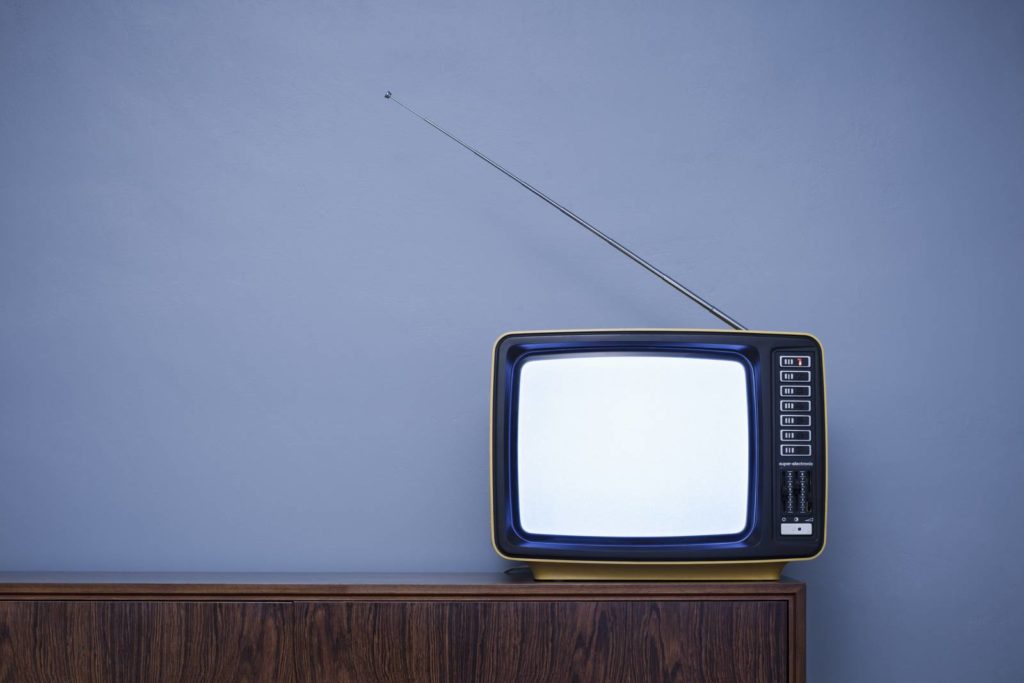M+E Connections

CES 2021: You Can’t See It All in One Sitting
Story Highlights
After years of working the floor at CES, it’s easy to summarize: dumb from the neck up, numb from the neck down. This year was worse. You couldn’t “miss” a keynote, press event, panel session — seven days of pre and CES press events, news, analysis, projections — because they were there, online waiting for you.
The good stuff you revisit. The rest you hit delete.
Simply put, CES 2021 was different and challenging for Shapiro’s CTA crew, and everyone else.
As Best Buy’s CEO Corie Barry said, “There’s no going back to the normal of 2019 … ever!”
There was still a lot of solid news at CES. In fact, it might have been better because companies, management and marketing had to really focus on the clarity and effectiveness of their messages as well as review them and critically hone them.
The folks who did were spot on in getting attention and persuading/convincing people. Those who didn’t wasted a lot of time, money, effort.
 Verizon’s Hans Vestberg laid the groundwork for all of the CES announcements because 2020 and the global lockdown made industries, businesses and individuals immerse themselves in tomorrow’s communications technology.
Verizon’s Hans Vestberg laid the groundwork for all of the CES announcements because 2020 and the global lockdown made industries, businesses and individuals immerse themselves in tomorrow’s communications technology.
In a media briefing prior to his CES keynote Vestberg said, “We leapfrogged seven to 10 years in the data revolution.” Social distancing and working/learning remotely have been key in the faster adoption of areas such as telemedicine and touchless retail.
According to Vestberg, 5G is now available to over 200 million people in 1,800 cities and towns; but more importantly, it is becoming the backbone of business and industry around the globe. The rollout of Verizon’s 5G Ultra-Wideband will handle the workload of the estimated 55B devices by 2025.
Netgear rolled out its Nighthawk RAXE500 Wi-Fi 6e unit that handles up to 12 separate streams while Asus unveiled its ROG Rapture gaming friendly unit.
Linksys’ new mesh unit covers up to 3,000 sq. ft. and supports Wi-Fi 6e for $499.
Wi-Fi 6 provides bandwidth for all of your devices – smartphones, computers, game consoles, the works without dropping a byte.
If we didn’t just have to get an update on what ATSC was doing, we might have skipped their online session because it almost felt as though we were peeking in on an engineering standards meeting with more technical discussion than application/user information.
ATSC 3.0 is an important advance in the terrestrial broadcast system because while you may shave or cut your cable bundle, it provides more than 20 standards to deliver OTA and OTT streams over the internet backbone you probably already have in your home or office.
In other words, it’s exciting stuff because streamer folks like Netflix, Disney + and others around the globe are bundling their content with the Pay-Tv providers who are focusing on handling the expanding content workload.
And yes … 5G, Wi-Fi 6 and ATSC 3.0 are also about streaming entertainment!
Riding on the distribution solutions; the key product areas at CES were TVs, PCs, mobile, transportation, home and healthcare.
New, better, more enhanced, more expensive TV sets are more than a passing interest for folks today because our cup runneth over with viewing options.
Samsung has been the leading TV vendor since 2015 and accounted for almost 20 percent of the total 230M units shipped last year.
At CES the leading players all put their biggest and best images forward.
Samsung seemed to say go big or go home with their 110-in MicroLED screen — great depth, great luminance gradation and great six-figure price.
 LG just keeps on rolling with a 55-in transparent OLED smart bed (spoiler there was also a rollable phone). And they introduced a 65-in OLED Eyesafe screen that’s supposed to be really good for your eyes just as Nielsen US adults were consuming a record 12 hrs., 12 min of content!
LG just keeps on rolling with a 55-in transparent OLED smart bed (spoiler there was also a rollable phone). And they introduced a 65-in OLED Eyesafe screen that’s supposed to be really good for your eyes just as Nielsen US adults were consuming a record 12 hrs., 12 min of content!
Sony unveiled 8K sets, OLED displays and 4K LED sets with acoustic multi-audio technology that makes the entire screen a speaker.
They also showed off new TVs that incorporate AI cognitive intelligence that mimics the human brain to adjust the images for perfect viewing.
Panasonic unveiled an OLED set incorporating an HCX Pro AI processor that improves picture quality and delivers the very lowest latency for responsive gaming performance. It also includes an HDMI Signal Power Link that simplifies PC and set-top box connection.
LG’s 48-in bendable cinematic sound OLED screen (no speakers needed) can be curved for improved gaming or flat for TV viewing.
Growth returns
With nearly everyone working from home at least part of 2020 and students of every age suddenly finding their classroom consisting of a flat screen, people quickly discovered they needed to upgrade their computer systems.
As a result, the PC industry enjoyed its biggest year in six years, closing in on roughly 300M units in 2020, according to IDC.
But although demand around the globe and in nearly every product segment was growing, there was only one little problem.
There was a chip shortage that affected … everyone!
While some the chip folks are trying to reverse engineer Apple’s M1 chip, Intel surprised the industry in the middle of CES by sweet talking Pat Gelsinger into giving up his top-of-the-heap job at VMware and come back (he was there for 20 years) and get the chip giant back on a steady course.
The news didn’t really phase Nvidia’s Jensen Huang or his relative, Dr. Lisa Su, who not only righted the AMD ship but guided it into becoming a major CPU provider and serious competitor to the Nvidia GPU kingdom.
With the PC becoming an essential part of how people work, play and connect; AMD rolled out a full portfolio of Ryzen 5000 mobile processors.
Sharing the virtual stage with Microsoft, LucasFilms and others, Dr. Su showcased the digital-first world for gamers, content creators, professionals and students. The chips are already appearing in more than 150 consumer/commercial notebooks from ASUS, HP and Lenovo.
Laptops
At CES, the work/play/communicate device makers were at their best and compute, notebook folks rolled out so many outstanding devices that picking favorites wasn’t easy.
We zeroed in on the Dell Latitude 9420 and 24-, 27- or 34-inch video conferencing monitor (it’s all in the budget) because the notebook includes their new Dell Optimizer software that uses AI to tune the system/apps to the way you work. The system has amazing performance and the Optimizer simplifies connectivity, collaboration, background noise-cancelling and auto-mute.
And for your WFH peace of mind, it also includes safeguards that prevent, detect and handle attacks across the system.
Since video conferencing is an integral part of business, the new Dell monitors are certified for Microsoft Teams and are easy-on-the-eyes for daily work.
Equally good portable systems were:
• ASUS Zenbook Pro Duo 15 OLED
• Lenovo Ideapad 5G
• Acer Aspire 5
• Alienware m15 R4 and m17 R4
• Lenovo ThinkBook Plus Gen 2
According to NPD’s Mat Piscatella, gaming was one of the few industries to thrive during the pandemic and the new hardware/software that was unveiled at CES proved these organizations came to play … and win.
With the assistance of our son, we picked two notebooks from the wide array that deserve strong consideration – the Asus ROG Zephyrus Duo 15 and Lenovo Legion 7.
For a gaming system, the ROG Zephyrus Duo 15 with its dual screen looks like it is the future of gaming. The secondary screen gives plenty of gaming support like extra menus, map previews, and inventory options that will help for a smoother, more seamless gaming experience. It features AMD’s next-gen Ryzen mobile processor and Nvidia’s RTX 3000 mobile GPUs.
The Lenova Legion 7’s 16-inch IPS display touts a 2560 x 1600 resolution, 165Hz refresh rate, HDR 400, and Nvidia G-Sync. With about the same price as last year, it comes with AMD Ryzen 5000 chips and Nvidia GeForce RTX 3000 GPUs.
Samsung came out with a huge show within a show — the next best thing to a powerhouse computer and enhanced monitor.
But they had to because they want to maintain their leadership ahead of Apple in a tough, spec heavy, multi-lens market that continues to grow – especially as people stream more content to their smallest screen.
 While everyone seems to be trying to keep up with/ahead of Motorola and the other foldable phones, TLC surprised a lot of folks with a rollable phone. It extends from 6.7-in to 7.8-in with the tap of a finger. It can store or be used as a square device or expand to a more traditional phone shape.
While everyone seems to be trying to keep up with/ahead of Motorola and the other foldable phones, TLC surprised a lot of folks with a rollable phone. It extends from 6.7-in to 7.8-in with the tap of a finger. It can store or be used as a square device or expand to a more traditional phone shape.
LG may be the king of the rollable TV screens but now they’re taking the technology to a smaller scale. The new rollable phone looks like a standard-size phone and then slides out into a small tablet for better stream viewing.
And yes, it will be available this year.
And since it appears that the most widely used application on your phone is the “play” button, there was a seemingly endless array of headphones and earbuds with a wide range of claims and prices. Sometimes we believe implants might be easier/cheaper in the long run.
Content
Regardless of how the content is delivered to the screen (smartphone, computer, table, big screen set) it’s simply TV.
At the same time, studio executives realize that the movie industry won’t enjoy record growth and profits without theaters.
Disney, Universal, Warner, Paramount and major/secondary studios around the globe recognize that theatrical releases are important — not just to their bottom line but also to the dedicated theater goer.
During one of the CES online discussions, one executive noted that nine months of home/device streaming entertainment has firmly established the fact that people can and will enjoy what they want, where they want and, on the device, they want … even first run, tentpole productions.
At the same time, there is a large segment of the population that can’t wait to escape their hibernation and return to the cinema to fully enjoy the total audio/video immersion of a film in a large venue … the way the producer and crew intended it to be experienced.
Following new and strict production guidelines, producers and production teams around the globe have been back at work (successfully) for months, except in the U.S., which continues to have problems/issues with safe production.
International facilities have done such a good job of controlling the pandemic issues that most in Canada, London, Central/Western Europe, New Zealand and others are solidly booked for the next five years.
Andy Marken, President, Marken Communications, is an author of more than 700 articles on management, marketing, communications, industry trends in media & entertainment, consumer electronics, software and applications.









